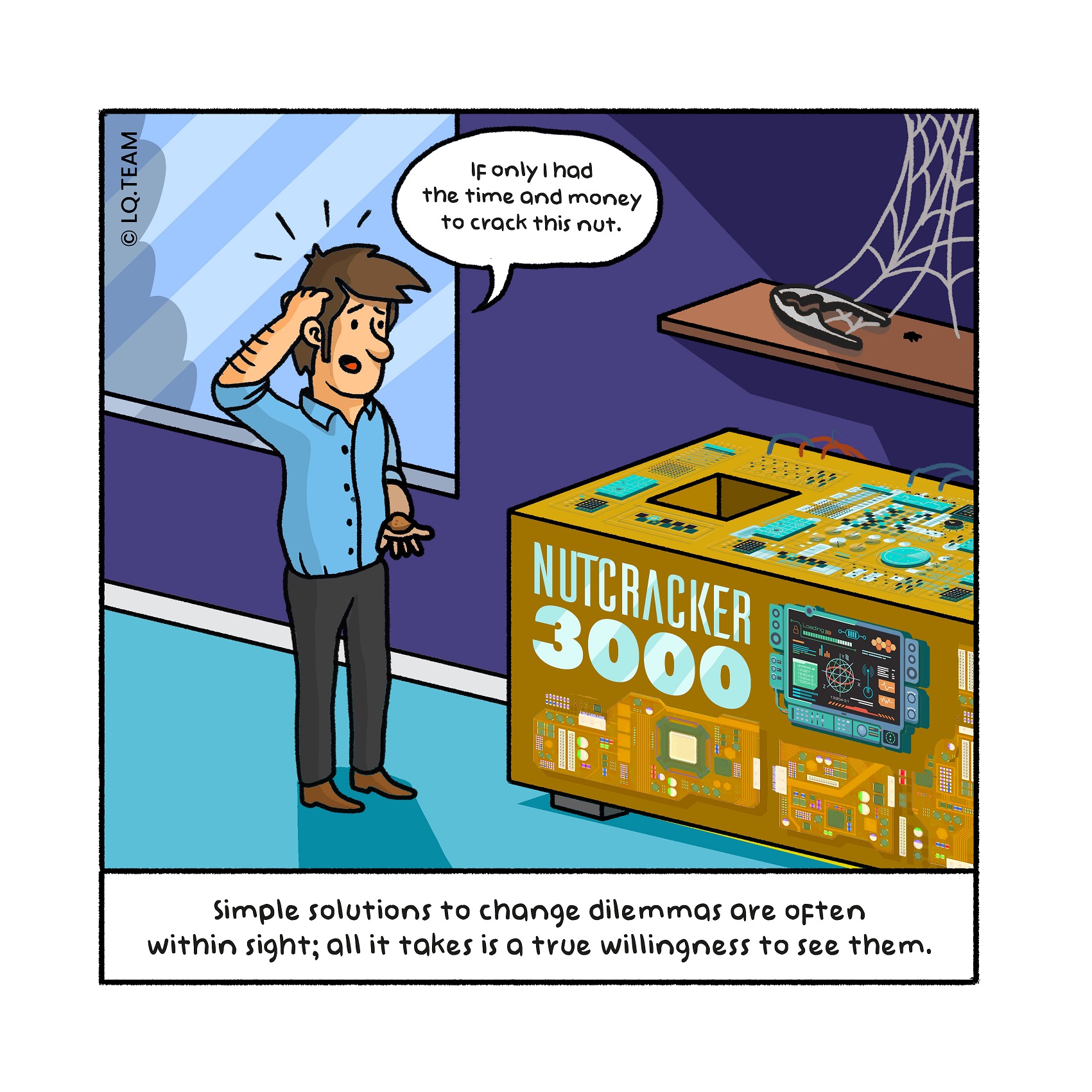
Nut to crack: How do you determine which next step is needed now?
A change process can be both predictable and unpredictable at times. How do you ensure you take the appropriate action at the right time? This book alone already describes at least 50 solutions. What action do you take and when?
Nutcracker: Two questions
To do the right things, it is important to keep returning to these two questions:
- “What is my current unresolved challenge?” or, differently phrased, “What is my nut to crack?”
- “What is the simplest and most effective way to intervene?”
The one-minute navigation at the end of this book can help you structure your problem and determine which nut or nuts to crack.
Real-life example: Slow down to speed up
A commercial director constantly receives wellintentioned advice on how to grow into a datadriven organisation. Ideas range from big to small; talk to this person, invite that person, introduce this new analysis tool and so on. It is driving him crazy. He therefore allows himself to take the time to form a good picture of what is needed to avoid shoot ing blanks.
What he does is the following. He blocks a day in his diary. He describes what an employ ee will do, think, see and experience when the organisational change is finished. For ex ample, he notes down for a sales employee; “A datadriven sales employee determines which customers to visit based on a segmentation analysis, uses dashboards to discuss with a customer which offers to make and, together with colleagues, makes decisions about whether or not to accept a deal based on a profitability analysis.” By visualising success and making it tangible, he reclarifies the desired end state.
Then he slows himself down. He walks out of his office and does the department’s rounds three times more slowly than usual. He focuses on all his senses: how do people interact with each other, which nonverbal behaviour does he see, and what does he feel? This allows him to see what he already knows to be true. The data is available but is not used, certainly not in the front line. More guidance is needed in the field to get employees to work with the data.
Therefore he invests in a data champion per department, who ensures that the tools which are already available are used by colleagues in their daily work, by training them on the job.
As a result, several employees learn to use data in conversations with customers, sup pliers and partners, as well as in preparing for and making internal decisions.
Tip for change leader
Refrain from determining from your desk what is needed at this moment in time to drive change forward. Walk around, ride with the forklift driver, talk to a sales employee, and ask customers questions. These observations and conversations of course reflect a par ticular moment in time, but at the same time they help you, in combination with the data analysis, to design change actions that lead to tangible results. In Lean Management, this is called the Gemba Walk.
Tip for change enabler
Schedule moments of reflection periodically. Encourage change leaders to conduct field research as input for these moments.
Kernel: Answers are often more apparent than you realise
Making change happen and ensuring that change takes root requires a gen- uine willingness, ability and acceptance to see what is there. Do not focus blindly on analysis, but sharpen all your senses to gauge where you stand, and what this means for what it takes at this moment to crack the nuts.
